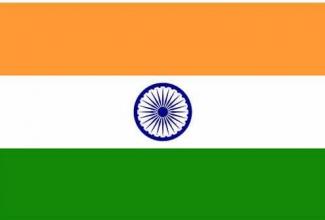Defence Budget: Hard Choices Ahead for India
Trends in defence expenditure denote certain clues to assess, especially the military component of a state’s comprehensive national power. Components of national power, in turn, are intricately linked to a state’s grand strategy - the latter connotes the desire of a state to achieve its rightful place in the global community. In brief, trends in defence expenditure tend to objectively assess aspects of a state’s military capability, although a lacuna remains as even the very concept of military capability is often value-laden.
The Government of India has hiked the defence budget to Rs 83,000 crores for the year 2005-06 from Rs 77,000 crores allocated in the previous year (2004-05) – an increase of 7.8 per cent in nominal terms. In percentage terms, the Budget Estimates (BE) for national defence constitute 2.37 per cent of the Gross Domestic Product (GDP), nearly 14 per cent of the Central Government Expenditure and less than 10 per cent of the Total Government Expenditure. The capital outlay stands at Rs 34.472 crores billion and constitutes 41.1 per cent of the BE. All three branches of the armed forces have witnessed an increase – the Army has got Rs31,275 crores – a jump to the tune of 12 per cent from the previous year, the Navy has Rs 6 027 crores – a jump of 13 per cent, and the Air Force has got Rs 9,004 – a jump of only 6 per cent. The BE also shows an increase of 21.1 per cent in spending for the Defence Research and Development Organisation, which stands at Rs 2,814 crores for 2005-06 (from Rs. 2 343 crores in the previous year).
A debate on India’s defence expenditure is placed in the overall context of her grand strategic ambitions vis-à-vis her material capability and resources. At a time when India’s growing economic prowess and beyond-region strategic ambitions are well acknowledged, is India spending the kind of money that could give her desirable dividends in achieving her strategic ambitions? A closer look at trends in India’s defence expenditure suggests some pointers.
First, India’s defence spending has never been anywhere near a stage where it could be termed a destabilizing factor in the broader global security framework. India’s defence spending, seldom crossing 3 per cent of its GDP, has hovered between 2.5 and 2.6 per cent for the past decade. Comparing this within a regional context would suggest that its neighbours like China and Pakistan have been spending relatively larger sums for national defence. Trends for the past 15 years suggest that while China’s defence budget has witnessed a real-term increase of 10-11 per cent per annum (average at current prices is much higher), the same percentage is pegged at around 13 per cent for Pakistan.
Second, real-term increase, which is pretty marginal, in India’s defence expenditure has been witnessed only recently. Part of the explanation for this rise is attributed to the fact that its long-ignored capital purchases during the 1970s and 1980s have resulted in weapons obsolescence in her inventory, which, in turn, has forced her to go for major procurements in recent times. One may even argue that such procurements are actually more for replenishment purposes than any major move toward force multipliers. Consider this – more than half of IAF’s existing fleet consists of the MiG series, which is nearly four decades old. Informed sources point out that India needs at least 130 – 150 fighter aircraft in the next five to seven years. If the objective of India becoming a strategic stabilizer in the Indian Ocean and probably beyond military exigencies beyond territorial terms is of any indication. India must equip itself suitably, necessitating a major naval fleet expansion and modernization of land-based assets.
Third, a huge gap exists between India’s domestic production efforts and her weapons requirements, resulting in almost 70 per cent of actual requirements being met through imports. India’s investment in military R&D has never crossed 7 per cent throughout history, while the same effort by the United States has rarely gone below 10 per cent. Insufficient funding for military R&D efforts has negatively impacted India’s indigenous production efforts, among other reasons.
Last but not least, rationalizing defence expenditure by reducing revenue expenditure and allocating more resources for capital purchases has been proved to be a herculean task for defence planners. However, some indications of positive reforms have been noted in the past few years. High revenue expenditure is unlikely to go down unless measures like rightsizing, de-linking the Army from internal security responsibilities, multi-tasking and other similar measures are undertaken.
A nominal increase in the defence budget has actually, in comparison to previous years, reflected stagnation. With growing security interests beyond South Asia, otherwise suggests that India must enhance her military power beyond territorial defence, especially in terms of long-reach capabilities. Such capabilities may cling more toward a stabilization role, which blends both offensive and defensive orientations, than purely offensive in nature. However, matching such capabilities with available resources is difficult but not impossible.
